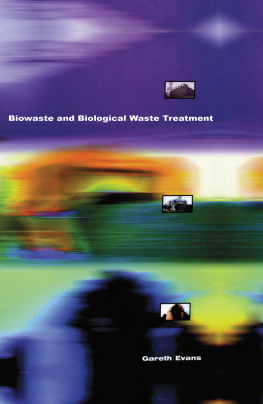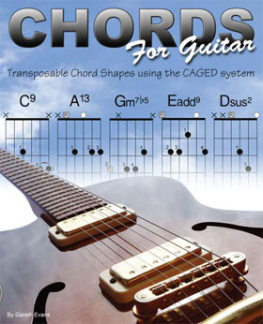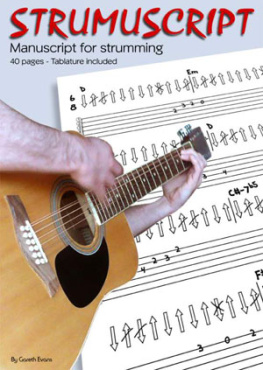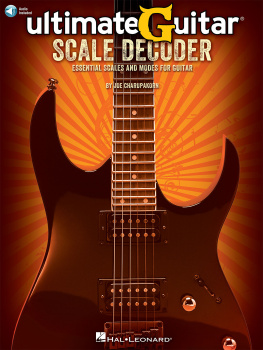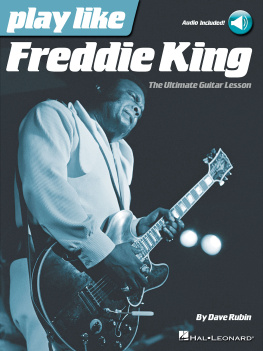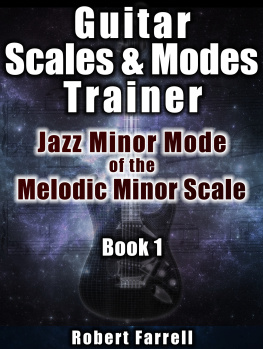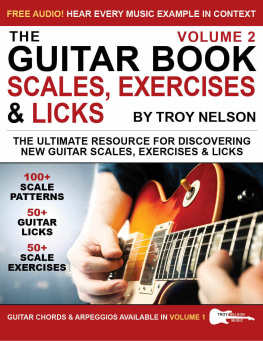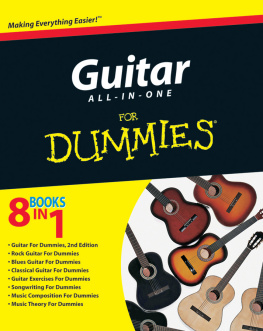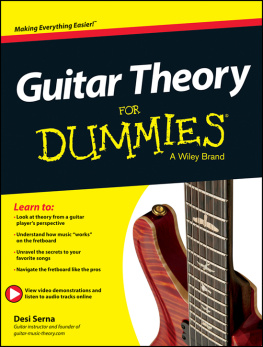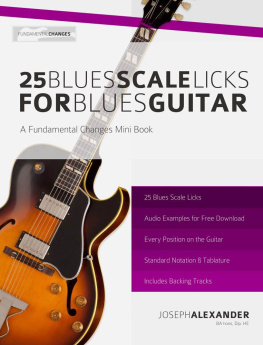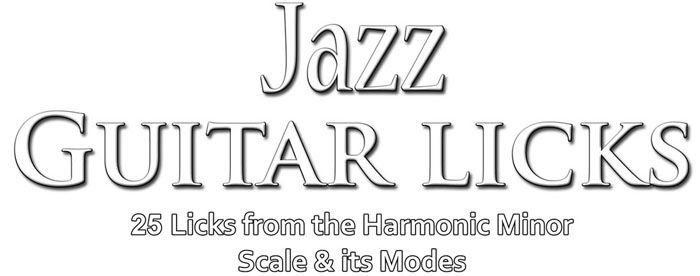
ISBN 978-0-9576499-4-1
Written by Gareth Evans
Copyright 2016 by Intuition Publications
www.guitar-book.com
International Copyright Secured. All rights reserved. No part of this publication may be reproduced in any form or by any means without the prior written permission of the publisher

The Audio and Video files can be found at this
Preface and Guidance Notes
Although this book is primarily about guitar licks, lets have a little look at the theory. If there are any gaps in your theory knowledge or theres anything here you dont follow then you should refer to a book on music theory. The Harmonic minor scale is made up of the intervals 1 2 b3 4 5 b6 7 Below is a diagram from the starting Root note (1) to its higher octave (1) with the spaces between the intervals in Tones (T) and Semitones (S).

Below is a C Harmonic minor scale (C D Eb F G Ab B C). Underneath it are other scales known as Modes that are found by starting the original scale from its other notes (D, Eb, F etc.) The resulting modes names are given to the left of each.
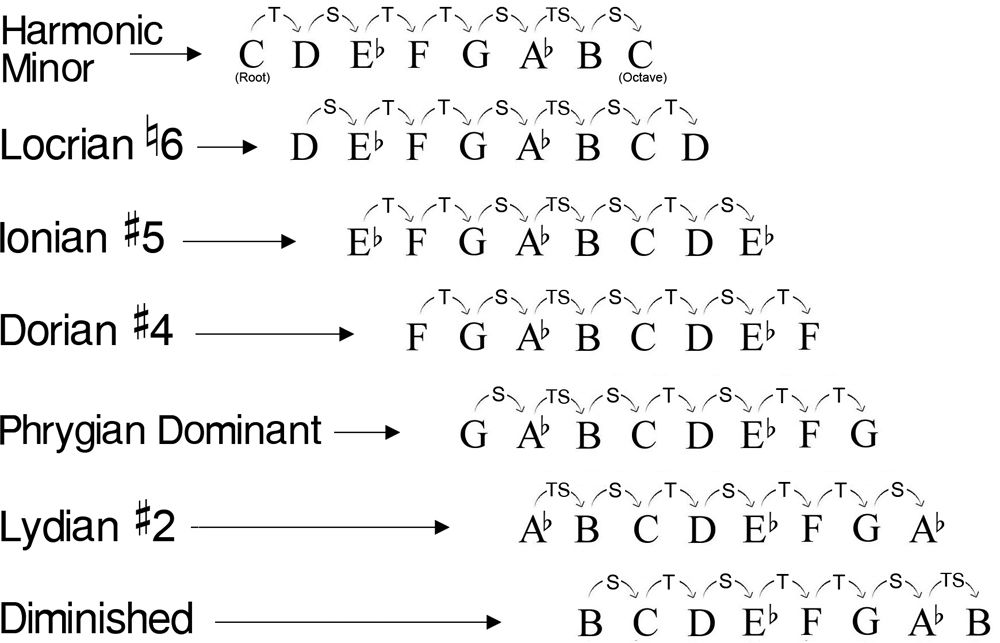
Modes can be found from within all major scales, not just the C Harmonic minor above. Following is a chart for all Harmonic minor scales and their modes. For the below chart, the Harmonic minor scales are on the left vertical column, with the note names from each scale to its right. Across the top are the modal names (Locrian natural 6, Ionian #5 etc.) for when the Harmonic minor scale is taken from the corresponding note below. Notice also that at the top of this chart, are numeric values for the notes of the Harmonic minor scales (1st, 2nd, b3rd etc.) These are generic names known as intervals that apply to all of the Harmonic minor scales (the 1st being the Root note).
As an example from the chart, the b3rd interval of D Harmonic minor is F, and if the scale of D Harmonic minor is taken from this note it will result in the mode of F Ionian #5 which will consist of the notes F G A Bb C# D E. Another example, the 7th interval of Bb harmonic minor is A and if the Bb harmonic minor scale is taken from this note it will result in the mode of A Diminished, which will consist of the notes A Bb C Db Eb F Gb.

The particular modes used for the licks in this book can all be located within the above chart: C Harmonic minor, D Harmonic minor, A Locrian Natural 6th, C Ionian #5, F# Dorian #4, Eb Phrygian Dominant, Bb Lydian #2 and C# Diminished (this is what the arrows on the above chart indicate).
If we regard the starting note of any mode as its own Root note (or 1 in the case of the chart) then we get the following generic scale formulas for the modes.
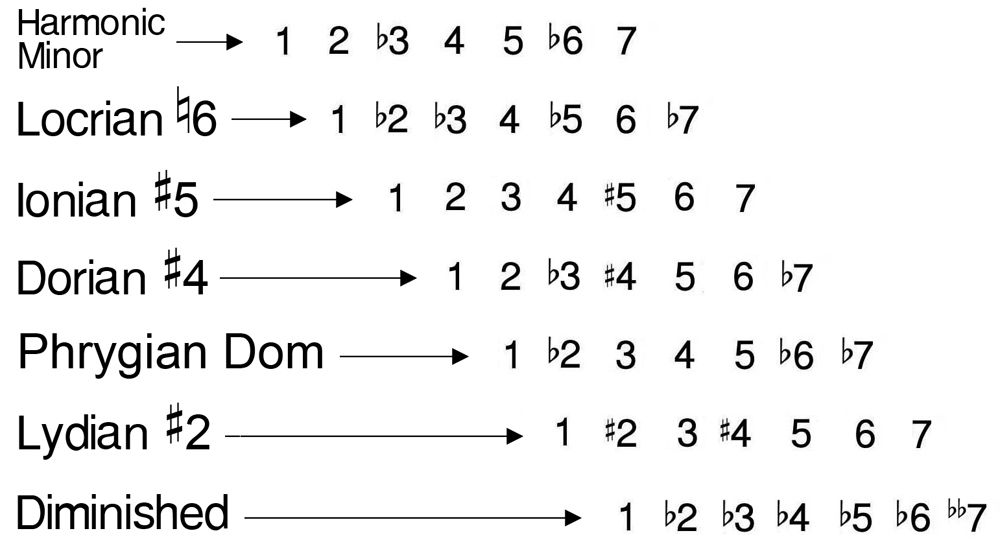
The flat b and sharp # symbols represent how the interval has changed in comparison to the Major scale (the mother of all scales). In the case of the Lydian #2 mode there is a #2nd which means the 2nd interval is raised. The reason behind these differences can be seen in the original chart on page 3 where the sequences of Tones and Semitones differ for each mode due to having been shifted from the original Harmonic minor scale.
For all of the licks in this book picking directions have been included above the tabs for your reference. These picking directions are the way I play it and the most efficient way I find of doing so. There may be parts of the licks you prefer to pick a little differently according to your own technique & habits. For example, where efficiency is not as critical (e.g. relatively slower parts) or where your strengths are different. The underlying basis should be minimization of movement for efficiency. If you are unsure just follow my picking directions in their entirety.
Also, numbers for the fretting hand fingers are written below the tabs. 1 for the 1st finger (index), 2 for the 2nd finger (middle), 3 for the 3rd finger (ring finger) and 4 for the 4th finger (little finger). Similar to the plucking directions these fretting finger directions are the most efficient way I find of playing the licks (and the same rules apply with this as written above for picking).
Occasionally, some techniques used are down to artistic licence (such as vibrato on certain notes). Feel free to exercise your own artistic licence, such as adding vibrato to certain notes where you feel appropriate. This is usually down to playing how you feel.
The backing tracks are in different speeds for you to start practising slowly and build up to higher speeds. If you feel you are not able to play any of the licks at full speed, then this does not mean a lower speed doesnt work musically and cant be appreciated as such. Besides, I never practise something I can already easily play, as that way I would not improve. The time signature for all of the licks is 4/4 time, which means there are 4 quarter note (crotchet) beats per bar, and most of the licks are in swing time.
Each guitar lick has a video of myself playing it, and an audio track of the same. The audio tracks also have a slow version for each lick. The closed hi-hat sound used for the beat on the slow versions occur on every quarter note beat and counts in on beats 3 and 4 before the lick starts. For licks that dont start on or near the first beat, the count in is started from a more appropriate beat. This will be mentioned for affected licks.
The layout of this book has been made so that no licks go over more than one page, which means you wont need to scan across pages while reading the same lick, or need to turn over a page to read parts of the same lick. The accompanying text after each lick has also been kept on the same page as much as possible.
Harmonic Minor Licks
The intervals of the Harmonic minor are 1 2 b3 4 5 b6 7 For C Harmonic minor this gives us the notes C D Eb F G Ab B
Below are the 5 CAGED patterns for C Harmonic minor. The R in squares represents the locations of the root note (otherwise known as 1), while the white and black shades identify separate occurrences of what is actually the same scale repeating in different octaves.
C Harmonic Minor Scales

The following licks use notes from within these. For each lick, the patterns that its notes are from are mentioned. You could focus on that at any point you wish, however, I would encourage you to study the licks themselves first.
Lick 1
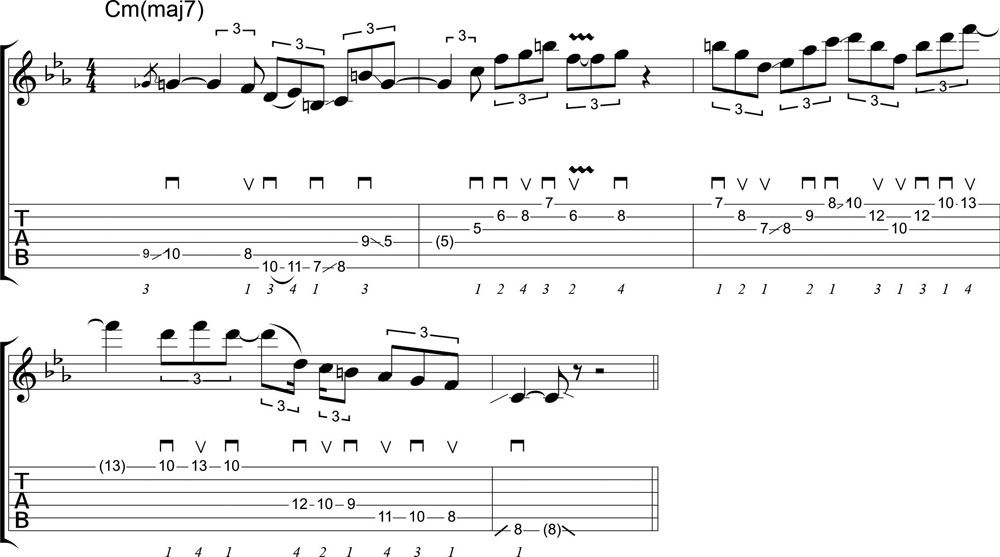
Next page


